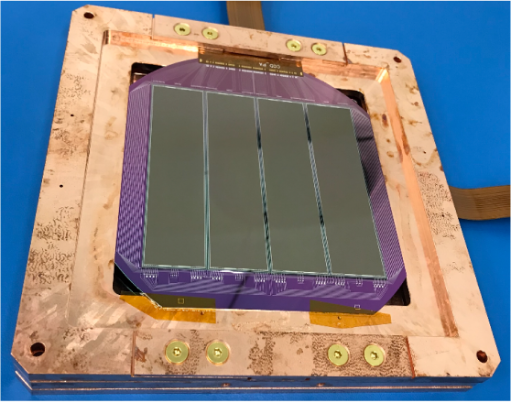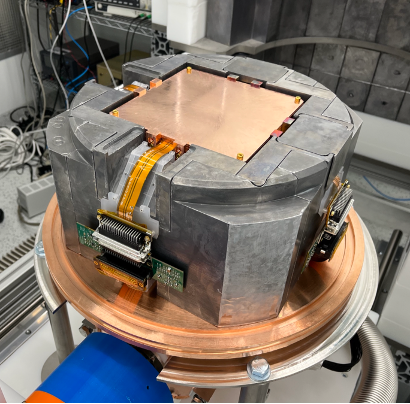
The DAMIC-M experiment (DArk Matter In CCDs at Modane), currently being installed at the Modane Underground Laboratory (LSM), uses a new generation of silicon sensors called Skipper CCDs to search for light dark matter particles. These sensors enable multiple readouts of each pixel without information loss, allowing measurement of extremely low energy deposits (down to a single electron !) with virtually zero readout noise.
In March 2025, the experiment published its first results based on three months of data collected with a prototype detector. These results set the best experimental constraints to date on interactions between dark matter particles and electrons, exploring for the first time a region of parameter space where light dark matter could have been produced after the Big Bang through freeze-in or freeze-out mechanisms. These results validate the detector's expected performance and pave the way for extended measurement campaigns with the complete system currently being installed.

Lead-shielded detection chamber with low radioactivity. This version accommodates two modules, the final system will include twenty-six.
Within the Paris-Saclay ecosystem, the DAMIC-M team at IJCLab contributes to several key components of the project. It participated in designing and installing the radiation shielding, essential for reducing background noise that could mask the rare expected signals. The team also coordinates the development of the data acquisition system, enabling precise control of the CCDs, reliable image readout, and continuous transmission for processing. Finally, the team is actively engaged in data analysis, from event reconstruction and identification of energy deposits compatible with dark matter interactions to studying theoretical dark matter models and expected signals in freeze-in or freeze-out production scenarios.
 Prototype Skipper CCD sensor
Prototype Skipper CCD sensor
Building on these activities, a research platform dedicated to Skipper CCDs is being established at IJCLab. It will bring together expertise in instrumentation, signal processing, radiation protection, and data analysis to support the development of these sensors within a regional framework, in collaboration with national and international partners. This initiative aims to foster technological innovations and explore new scientific applications for these ultra-low-energy detectors, which are progressively establishing themselves as successors to conventional CCDs for the most demanding detection and imaging instruments.
Learn more:
Probing Benchmark Models of Hidden-Sector Dark Matter with DAMIC-M - Arxiv























